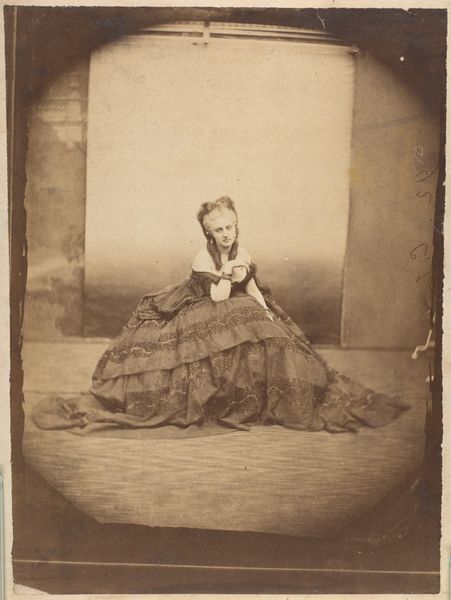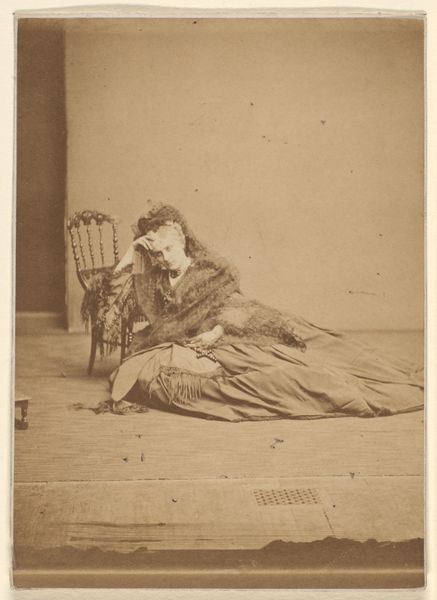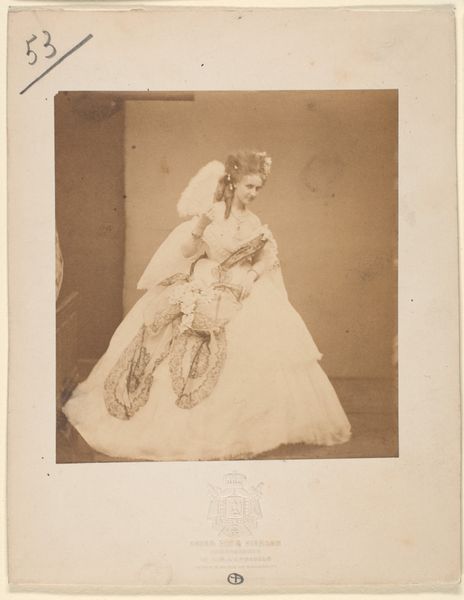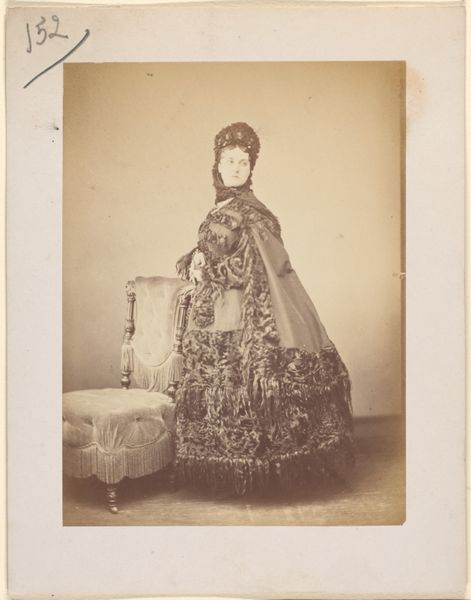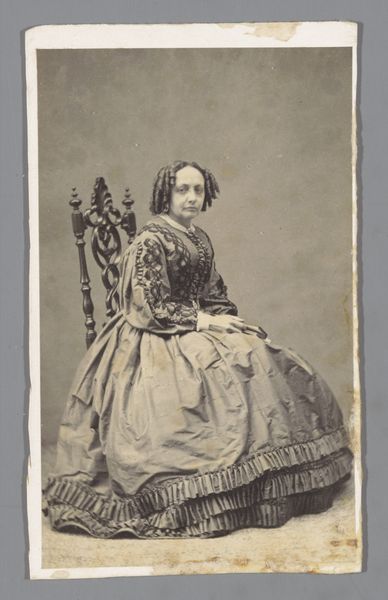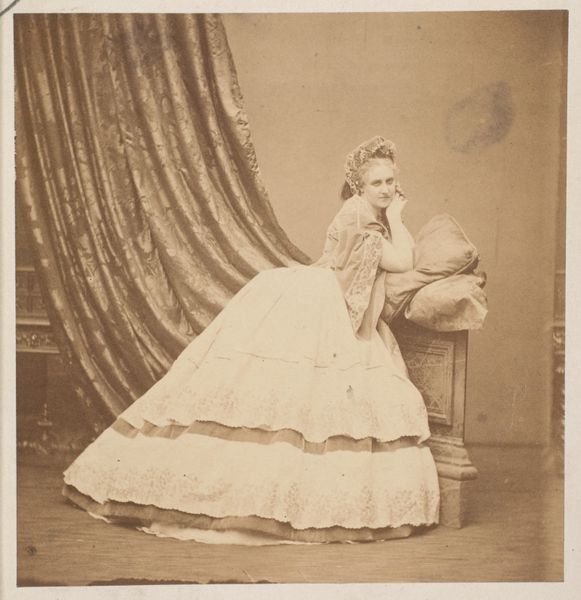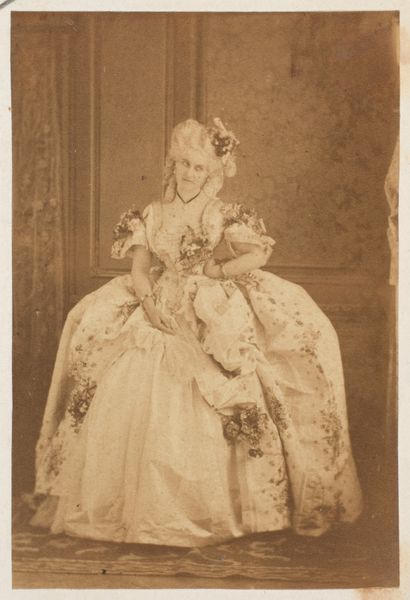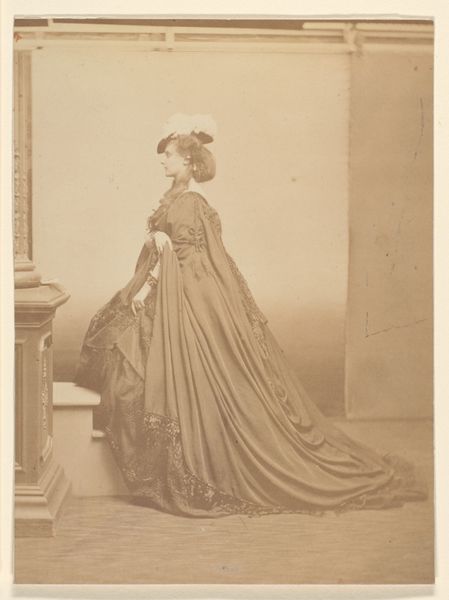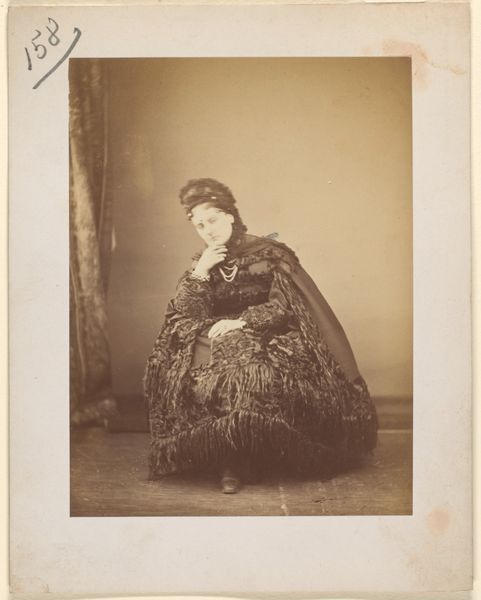![[Standing with a Rosary] by Pierre-Louis Pierson](/_next/image?url=https%3A%2F%2Fd2w8kbdekdi1gv.cloudfront.net%2FeyJidWNrZXQiOiAiYXJ0ZXJhLWltYWdlcy1idWNrZXQiLCAia2V5IjogImFydHdvcmtzL2RhMjY2MDBkLTZmNTYtNDNiZS1iOTA2LWRkZjVhOTkwYzM1Ni9kYTI2NjAwZC02ZjU2LTQzYmUtYjkwNi1kZGY1YTk5MGMzNTZfZnVsbC5qcGciLCAiZWRpdHMiOiB7InJlc2l6ZSI6IHsid2lkdGgiOiAxOTIwLCAiaGVpZ2h0IjogMTkyMCwgImZpdCI6ICJpbnNpZGUifX19&w=3840&q=75)
photography
#
portrait
#
charcoal drawing
#
photography
Dimensions: Image: 11.7 x 8.5 cm (4 5/8 x 3 3/8 in.) Mount: 15.5 x 10 cm (6 1/8 x 3 15/16 in.)
Copyright: Public Domain
Curator: Standing with a Rosary, a photograph realized by Pierre-Louis Pierson sometime between 1861 and 1867, offers us a striking portrait of a woman. Editor: My immediate reaction is one of quiet introspection. The muted tones, the veiled figure, there's a subdued solemnity about it. I wonder what narratives the textures and layers can unravel. Curator: The sitter's identity is crucial. Though unnamed here, it’s understood that she's the Countess de Castiglione, a figure of great beauty, political influence, and intrigue in the court of Napoleon III. To explore the complex ways the Countess exercised her influence over this period opens the door for modern explorations around identity, beauty, and politics. Editor: It's intriguing how the photograph almost theatricalizes the process of image-making. Looking closely, the draped textiles create depth, and the rosary serves almost as an ornamental device within her carefully constructed self-image. Curator: Absolutely. There’s a performative aspect to the photograph itself. Pierson's collaboration with the Countess was prolific; their combined effort aimed to elevate her social standing, shaping and reshaping her identity in the public consciousness through visual narratives. Editor: Focusing on Pierson's craftsmanship and the materials used, do you think that the choice of photography – still a relatively new medium – plays into this deliberate shaping of her public image? It must've influenced access and perceptions, when paintings would only portray the elite! Curator: Undeniably. The accessibility and reproducibility of photography offered a unique means for the Countess to democratize and disseminate her image, challenging traditional aristocratic portraiture's exclusive nature, playing with notions of celebrity, accessibility, and power dynamics within society. The question of labor involved is key to all this. Editor: Well, thinking of this interplay—the countess's performance of piety and power—reveals the complex production of celebrity, even in that era. And the materials themselves, down to the rosary's beads, all point towards how her image was constructed through objects and poses. Curator: Considering it now, the photograph then becomes more than a mere portrait; it stands as a statement about feminine power and influence. Editor: A fascinating exploration of persona and materials. It definitely makes you consider how material and technique affect how we consider and perform our gender.
Comments
No comments
Be the first to comment and join the conversation on the ultimate creative platform.

